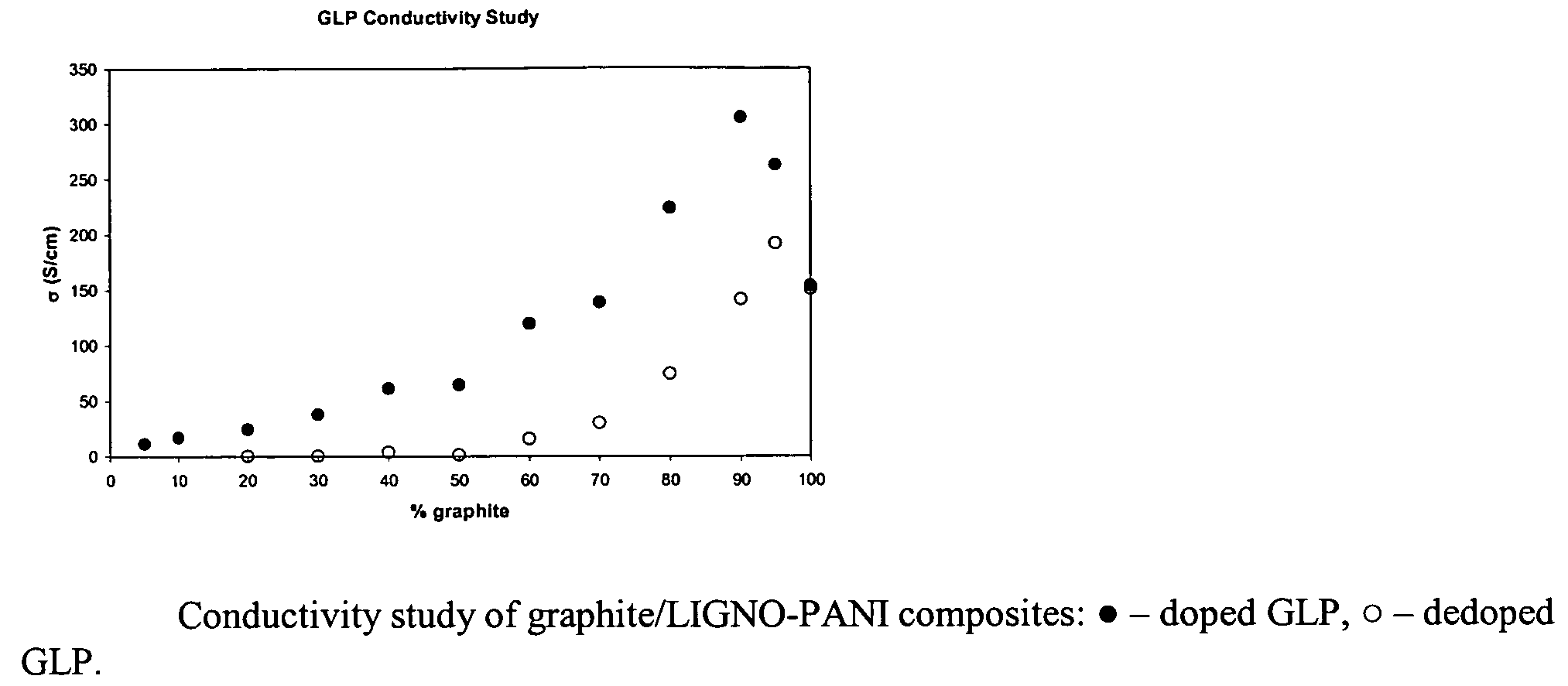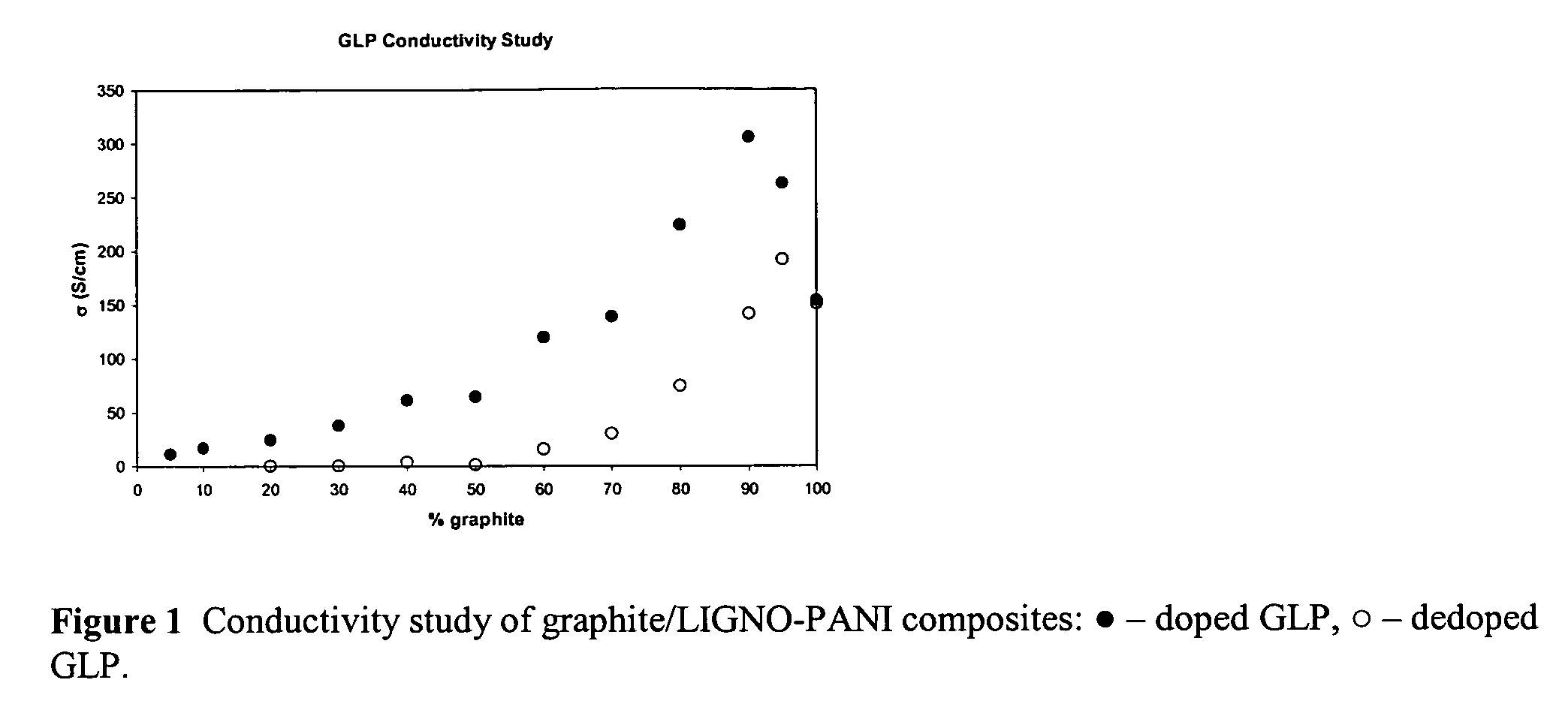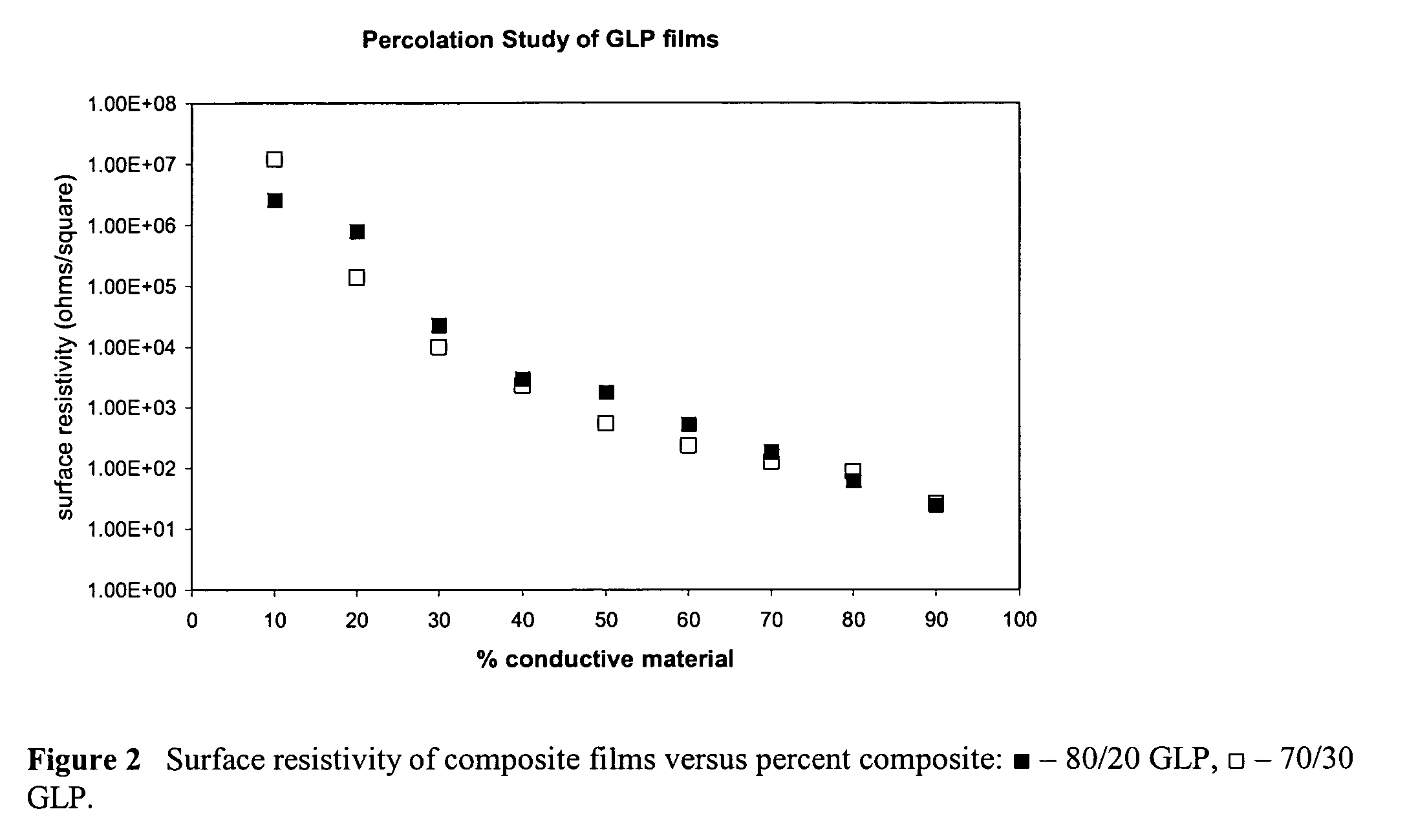Lignosulfonic acid-doped polyaniline composites with carbon allotropes
a technology of polyaniline and lignosulfonic acid, which is applied in the direction of non-metal conductors, conductors, organic conductors, etc., can solve the problems of high insolubleness and limited conductivity of these composites
- Summary
- Abstract
- Description
- Claims
- Application Information
AI Technical Summary
Problems solved by technology
Method used
Image
Examples
example 1
[0019]The following composites of GLP were prepared as described immediately below:
Synthesis of 90 / 10 GLP:
[0020]A 36.0 g sample of colloidal graphite (25% solids in water), 25.0 mL of 1M HMSA, 0.25 g Reax 825E, and 1.00 mL aniline were added to a beaker. The solution was cooled to ˜0° C. Then 2.62 g sodium persulfate was added. The reaction was allowed to stir overnight. The solution was then filtered by vacuum through a Whatman #4 filter paper and washed with distilled water. The cake was then washed twice with 50 mL 1M HMSA. The sample was dried under vacuum to determine percent solids of the wet cakes. The conductivity of the pressed pellet was 295 S / cm. The sample was dedoped by stirring the dry solids in 1M NaOH overnight, vacuum filtering through a Whatman #4 filter paper followed by extensive washing with distilled water. The conductivity of the dried dedoped sample was 140 S / cm.
example 2
Synthesis of 80 / 20 GLP:
[0021]A 32.0 g sample of colloidal graphite (25% solids), 50.0 mL of 1M HMSA, 0.50 g Reax 825E, and 2.00 mL aniline were added to a beaker. The solution was cooled to ˜0° C. Then 5.24 g sodium persulfate was added. The reaction was allowed to stir overnight. The solution was then filtered by vacuum through a Whatman #4 filter paper and washed extensively with distilled water. The cake was then washed twice with 50 mL 1M HMSA. The sample was dried under vacuum to determine percent solids of the wet cakes. The conductivity of the pressed pellet was 223 S / cm. The sample was dedoped by stirring the dry solids in 1M NaOH overnight, vacuum filtering through a Whatman #4 filter paper, and washing extensively with distilled water. The conductivity of the dedoped sample was 75 S / cm.
[0022]Both bulk conductivities and film resistivities of the composite samples were determined. DC conductivity measurements were made on pressed pellets with an Alessi four-point conductivi...
example 3
Synthesis of 80 / 20 GLP Doped with p-TSA:
[0025]A 32.0 g sample of colloidal graphite (25% solids) and approximately 150 mL of distilled water was added to a beaker. A 0.5 g sample of Reax 825E was added and the pH of solution was brought to ˜2 with sulfuric acid. A 2 mL aliquot of aniline was added. Then 9.51 g of p-TSA was then added to the reaction mixture. The solution was then cooled to ˜0° C. Sodium persulfate was added in a 1.1:1 mole ratio to aniline. The reaction was allowed to stir overnight. The solution was filtered by vacuum through a Whatman #4 filter paper and washed with distilled water. The cake was washed twice with 50 mL 1M p-TSA. The sample was dried under vacuum to press pellets for conductivity measurements and also to determine percent solids of the wet cake. The wet cake was then used in casting films for resistivity studies. The conductivity of the sample was determined to be 68 S / cm.
PUM
| Property | Measurement | Unit |
|---|---|---|
| weight percent | aaaaa | aaaaa |
| weight percent | aaaaa | aaaaa |
| weight percent | aaaaa | aaaaa |
Abstract
Description
Claims
Application Information
 Login to View More
Login to View More - R&D
- Intellectual Property
- Life Sciences
- Materials
- Tech Scout
- Unparalleled Data Quality
- Higher Quality Content
- 60% Fewer Hallucinations
Browse by: Latest US Patents, China's latest patents, Technical Efficacy Thesaurus, Application Domain, Technology Topic, Popular Technical Reports.
© 2025 PatSnap. All rights reserved.Legal|Privacy policy|Modern Slavery Act Transparency Statement|Sitemap|About US| Contact US: help@patsnap.com



